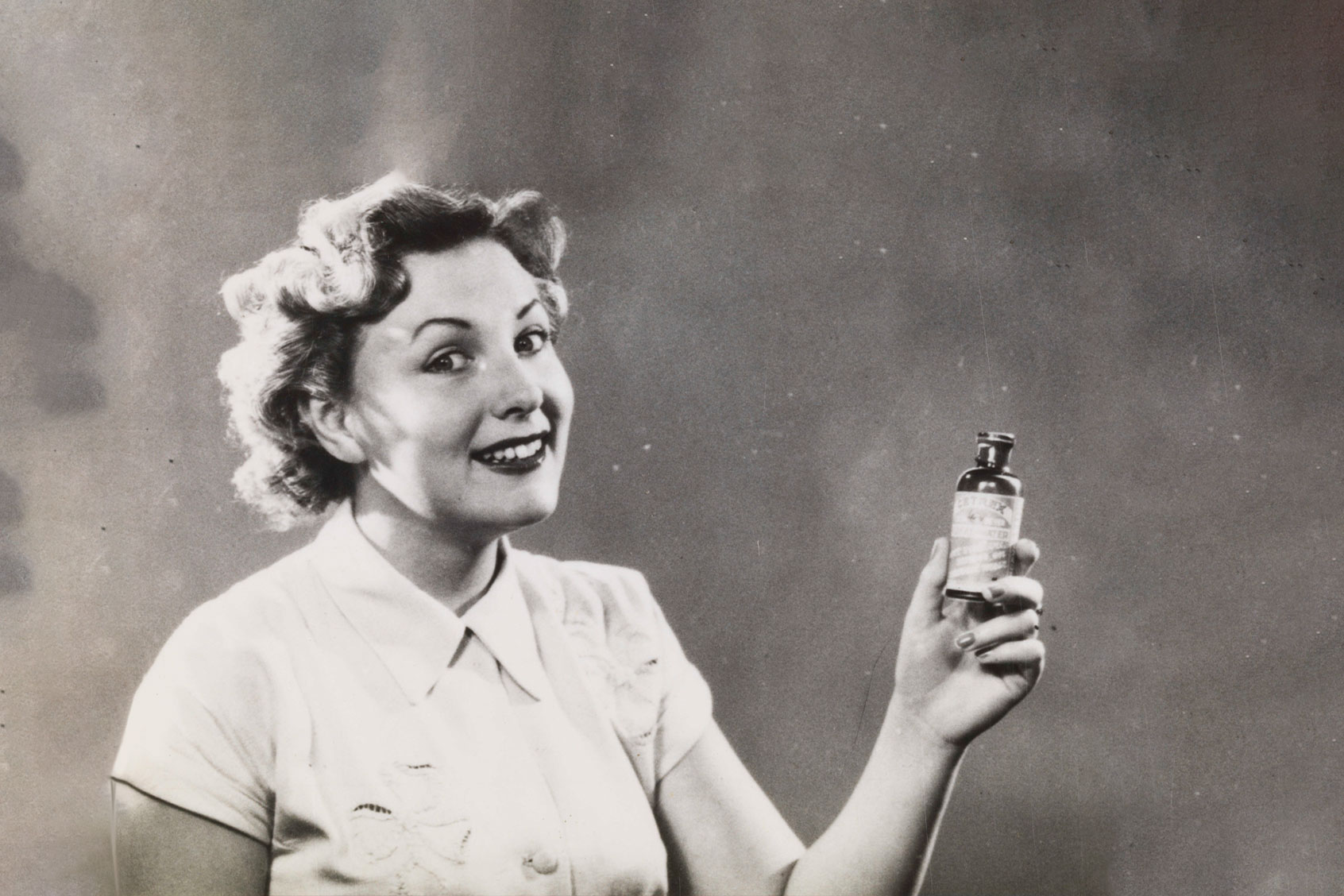You’ve probably seen this ad before: A suburban family about to head to do something recreational. Then, mom or dad suddenly clutches their abdomen. The color drains from the screen. A voice solemnly asks, “Do you experience [insert symptoms]? Talk to your doctor about [marketing word for magenta drug capsule]. Side effects include [half a medical dictionary].” Cut to a green meadow with color saturation on high, a swell of uplifting stock music and a logo plastered above too-small-to-read text. “[Drug] gave me my life back,” the actor says directly into the camera. “Thanks [pharmaceutical company]!”
Americans watch a lot of television ads, and a huge number are for pharmaceutical drugs. (Indeed, among industries that buy TV ads, Big Pharma is the fourth-biggest spender). All of this might feel deeply weird to people in other countries where this practice is banned. The only other nation besides the United States that allows direct-to-consumer advertising for pharmaceutical meds is New Zealand.
“Fewer than one-third of the most common drugs featured in direct-to-consumer television advertising were rated as having high therapeutic value,” the authors wrote.
But it’s a profitable venture that is only becoming more common. Biotech giants like Eli Lilly and Novo Nordisk spend billions bringing their drugs to living rooms across the country. Given all the ads, you might think that Americans were getting a magnificent deal from the cutting edge of the biotech sector. But a new analysis pours cold water on this notion, finding that less than one-third of the drugs most heavily advertised on TV between 2015 and 2021 have “high therapeutic value.”
In other words, despite the flashy music and slick production values, the drugs promoted on TV typically aren’t even that special compared to generics or other medications.
To illuminate this relationship, researchers from universities including Dartmouth, Harvard and Yale formed a database of the most advertised drugs, coming up with 73. These medications are indicated for everything from quitting smoking to neurological diseases.
Then, they obtained a list of value rankings for the drugs from several independent health technology assessment agencies in Canada, France and Germany. The job of these agencies is to rate the safety, benefits and efficacy of a given drug compared to other existing therapies. And it turns out, most drugs you see on TV would flunk this test.
“Fewer than one-third of the most common drugs featured in direct-to-consumer television advertising were rated as having high therapeutic value,” the authors wrote, which they defined as “providing at least moderate improvement in clinical outcomes compared with existing therapies.” Their results were published in the journal JAMA Network Open.
A possible explanation for all this is that super effective drugs don’t need to be advertised… so pharmaceutical companies might be incentivized to promote drugs that are “of lesser value,” as the authors put it.
Why take Drug A when Drug B is cheaper and just as effective? Simply put, it comes down to marketing. The amount of spending on these types of ads — even for drugs that don’t have spectacular benefits — was $15.9 billion from 2015 to 2021. The drugs with the lowest benefits included Dulaglutide (for type 2 diabetes), Varenicline (for smoking cessation) and Tofacitinib (for rheumatoid arthritis.) These aren’t public service announcements. The companies that financed these ads want to see a return on their investments.
A possible explanation for all this is that super effective drugs don’t need to be advertised. They’d presumably sell themselves — so pharmaceutical companies might be incentivized to promote drugs that are “of lesser value,” as the authors put it.
A good deal of research suggests that there can be positive benefits to seeing ads like these, such as encouraging some patients to take a more active role in their health. Patients may request a new medication they heard about that may improve their condition. Or it could alert them to a side effect they should be aware of. Pharma ads may even ease stigma of certain conditions like mental illness or sexual dysfunction.
But the results may not always be so rosy. There is a risk that patients can be prescribed inappropriate or unnecessary medications while driving up drug costs without added benefits. It’s not easy making an informed medical decision based on a 30-second clip produced with the intent to persuade a sale.
Want more health and science stories in your inbox? Subscribe to Salon’s weekly newsletter The Vulgar Scientist.
“Despite their intent to educate, drug prescription ads are inherently complicated by financial incentives, which is a topic of great controversy,” a recent analysis by StatPearls explained. “There are ethical concerns that such advertising strategies are predatory and cause harm to patients.”
Much of this began in 1997 when the U.S. Food and Drug Administration loosened restrictions to allow directly marketing drugs to consumers. And it really took no time at all for the money for TV drug ads to start pouring in. An August 1997 article in LA Times reported that “Drug advertising already had been growing rapidly, and some experts expected Friday’s FDA announcement to fuel a boom. Pharmaceutical companies spent $595.5 million on ads last year, a 90% increase over the $313.2 million spent in 1995, according to Competitive Media Reporting, with the bulk of the money going to magazines.”
Today, that budget is in the tens of billions. In 2015 the American Medical Association called for a ban on direct-to-consumer pharma ads. But not much traction has been made since then. The authors of the JAMA study seemingly aren’t optimistic, either.
“Policy makers and regulators could consider limiting direct-to-consumer advertising to drugs with high therapeutic or public health value,” the authors wrote, “but policy changes would likely require industry cooperation or face constitutional challenge.”

